
Today I was at the library with a stack of books when I saw a little one from our elementary school. She recognized me, and her face lit up as she said hello. Then her eyes grew big.
“That’s a lot of chapter books,” she said, as she noticed my pile of books.
“Yes, it is,” I said, smiling. “I love reading.”
“I do too!” she exclaimed as her mother proceeded to check out at least 30 picture books for her and her brother.
Reading
My summer = lots of reading. I am always on the lookout for great reads. I have a list on my phone that I am always adding to when I get recommendations from friends. I also look at blogs, Twitter feeds, and summer reading lists that are published from a variety of sources. I try to balance this with professional reading: technology articles, trauma informed, social justice . . . just a few of the things we are working on in our district.
My personal favorite is reading books that I can recommend to students. Nothing is as powerful as putting a book in the hands of a child and saying, “I read this and I think you’ll love it. Read it and then we’ll talk.”
Researching
As I do my professional reading, it invariably leads me to research. After all, the more you know, the more you want to know.
In addition, I tutor students over the summer and am constantly seeking new information that might help me understand my students’ struggles and find ways to help them. Summer is a great time to follow link after link . . . to fall down the rabbit hole because you actually have the time to do so.
Reflecting
One of the luxuries of summer is having time to reflect on my professional practice. While we do this throughout the year, summer is a great time to look back and really take time to reflect and revise for next year.
I love to get together with other teachers and make informed decisions about changes going forward. Even more, I will often find myself taking notes on my phone when I’m riding in the car (not driving!) on summer trips. It’s as though my brain finally can relax and my creative thoughts can really flow.
Whatever it is that renews you this summer, do it. Teaching takes so much out of you–even though we all say it’s worth it. Maybe your three R’s are relax, rest, and recharge. (Mine will be for a few weeks at least!) Enjoy your time–you deserve it!
 Beth Rogers (@bethann1468) has taught in the elementary setting for the past 11 years. During this time, she earned her Master’s in Educational Technology from Michigan State University. This year, she is in a new position: Instructional Technologist K-12. This gives her the unique opportunity to work with teachers and students, district wide, to incorporate technology into their teaching and learning, in ways that engage, enhance, and extend the learning. She has already already begun to work with multiple classrooms to engage students in blogging, and to help teachers understand the power of this platform. At home, she lives with her husband, sons, and an anxiety-ridden German Shepherd who requires inordinate amounts of time and attention.
Beth Rogers (@bethann1468) has taught in the elementary setting for the past 11 years. During this time, she earned her Master’s in Educational Technology from Michigan State University. This year, she is in a new position: Instructional Technologist K-12. This gives her the unique opportunity to work with teachers and students, district wide, to incorporate technology into their teaching and learning, in ways that engage, enhance, and extend the learning. She has already already begun to work with multiple classrooms to engage students in blogging, and to help teachers understand the power of this platform. At home, she lives with her husband, sons, and an anxiety-ridden German Shepherd who requires inordinate amounts of time and attention.

 About 17 percent of new teachers will leave the profession in their first five years,
About 17 percent of new teachers will leave the profession in their first five years,  Lauren Nizol (
Lauren Nizol (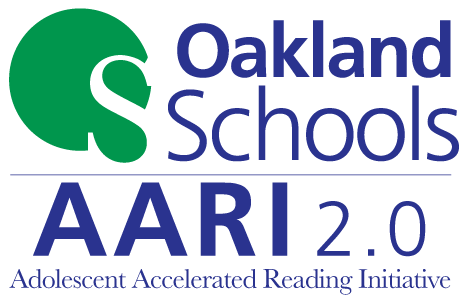

 Back in January an article came out that had the teachers in my building thinking, We’ve been saying that forever and finally someone is acting on it! The article was titled
Back in January an article came out that had the teachers in my building thinking, We’ve been saying that forever and finally someone is acting on it! The article was titled  I am fortunate that in my district, when we started the all-day, every-day kindergarten program in 2008, the district stressed the importance of play in the classroom. I am also fortunate that my building principal supports this. We have free-choice play in my classroom every day; this is something that never changes and I hope never will.
I am fortunate that in my district, when we started the all-day, every-day kindergarten program in 2008, the district stressed the importance of play in the classroom. I am also fortunate that my building principal supports this. We have free-choice play in my classroom every day; this is something that never changes and I hope never will. Tricia Ziegler (Twitter:
Tricia Ziegler (Twitter: 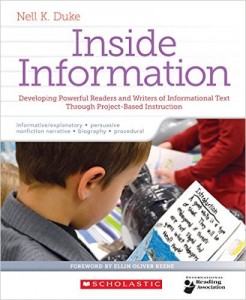 Research suggests that students write better when they have an audience beyond the teacher and revise more when they have a specified purpose for writing. Project-based approaches provide a framework for engaging students in writing for authentic purposes and audiences, thus more deeply motivating their revision. In this webinar, Duke will describe how to situate revision in a project-based context and share techniques for structuring students’ revision and editing processes within that context.
Research suggests that students write better when they have an audience beyond the teacher and revise more when they have a specified purpose for writing. Project-based approaches provide a framework for engaging students in writing for authentic purposes and audiences, thus more deeply motivating their revision. In this webinar, Duke will describe how to situate revision in a project-based context and share techniques for structuring students’ revision and editing processes within that context.
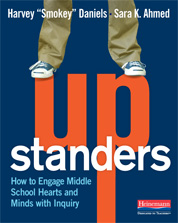 Anyone who knows me knows that I am a voracious reader (comes with the English teacher territory, right?). Anyone who knows me really well knows that I’m not just reading books for pleasure, but that I’m a voracious reader of professional books. Case in point: I read five books about grading last summer. Riveting stuff.
Anyone who knows me knows that I am a voracious reader (comes with the English teacher territory, right?). Anyone who knows me really well knows that I’m not just reading books for pleasure, but that I’m a voracious reader of professional books. Case in point: I read five books about grading last summer. Riveting stuff. Upstanders
Upstanders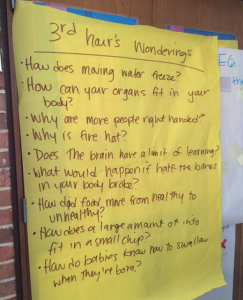
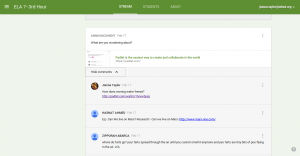
 ianna Taylor is an ELA and Title 1 teacher at Orchard Lake Middle School in West Bloomfield. She is a member of the AVID Site Team and Continuous School Improvement Team at her school, among other things. She is also a
ianna Taylor is an ELA and Title 1 teacher at Orchard Lake Middle School in West Bloomfield. She is a member of the AVID Site Team and Continuous School Improvement Team at her school, among other things. She is also a  Kids in schools today get tested, evaluated, assessed, analyzed, and then tested some more. In this process, students often end up with a wide range of scores attached to their names, from MEAP scores to NWEA scores to grade level equivalency scores to recommended lexile levels for reading. We may be, as the saying goes, “data rich and information poor.” We have lots of statistics and other data, but we’re not really sure how to use it all. This is particularly true when it comes to reading. I often hear teachers describe their students as readers by assigning grade levels for their reading abilities, as in “she’s in the 9th grade but she reads at the fourth grade level.” This grade level labeling, for lack of a better term, is especially common in our talk about young people who are not meeting the academic expectations placed on them at school. Statements like, “half of my students are reading two grades below level,” are pretty common in my conversations with teachers concerned about their students’ reading skills.
Kids in schools today get tested, evaluated, assessed, analyzed, and then tested some more. In this process, students often end up with a wide range of scores attached to their names, from MEAP scores to NWEA scores to grade level equivalency scores to recommended lexile levels for reading. We may be, as the saying goes, “data rich and information poor.” We have lots of statistics and other data, but we’re not really sure how to use it all. This is particularly true when it comes to reading. I often hear teachers describe their students as readers by assigning grade levels for their reading abilities, as in “she’s in the 9th grade but she reads at the fourth grade level.” This grade level labeling, for lack of a better term, is especially common in our talk about young people who are not meeting the academic expectations placed on them at school. Statements like, “half of my students are reading two grades below level,” are pretty common in my conversations with teachers concerned about their students’ reading skills. s this important to know? Of course it is, because if we can find ways to motivate him and build prior knowledge before reading, we can help him move far beyond his test score. However, if we think he can’t read more advanced texts, we might never ask him to him read, or we might just give him low-level texts when we can find them. We might never challenge him to use the resources he already has to become a better reader, and we might allow him to move into learned helplessness and believe that he doesn’t have the potential to read advanced texts well.
s this important to know? Of course it is, because if we can find ways to motivate him and build prior knowledge before reading, we can help him move far beyond his test score. However, if we think he can’t read more advanced texts, we might never ask him to him read, or we might just give him low-level texts when we can find them. We might never challenge him to use the resources he already has to become a better reader, and we might allow him to move into learned helplessness and believe that he doesn’t have the potential to read advanced texts well.